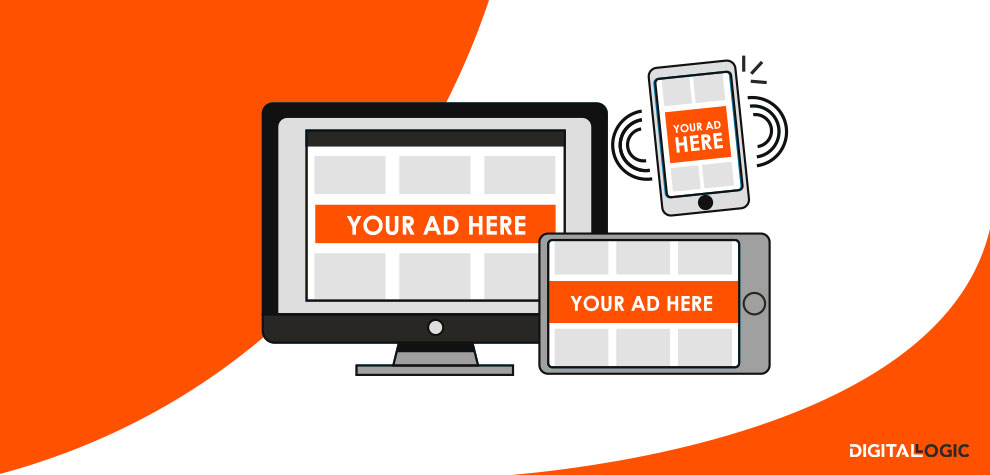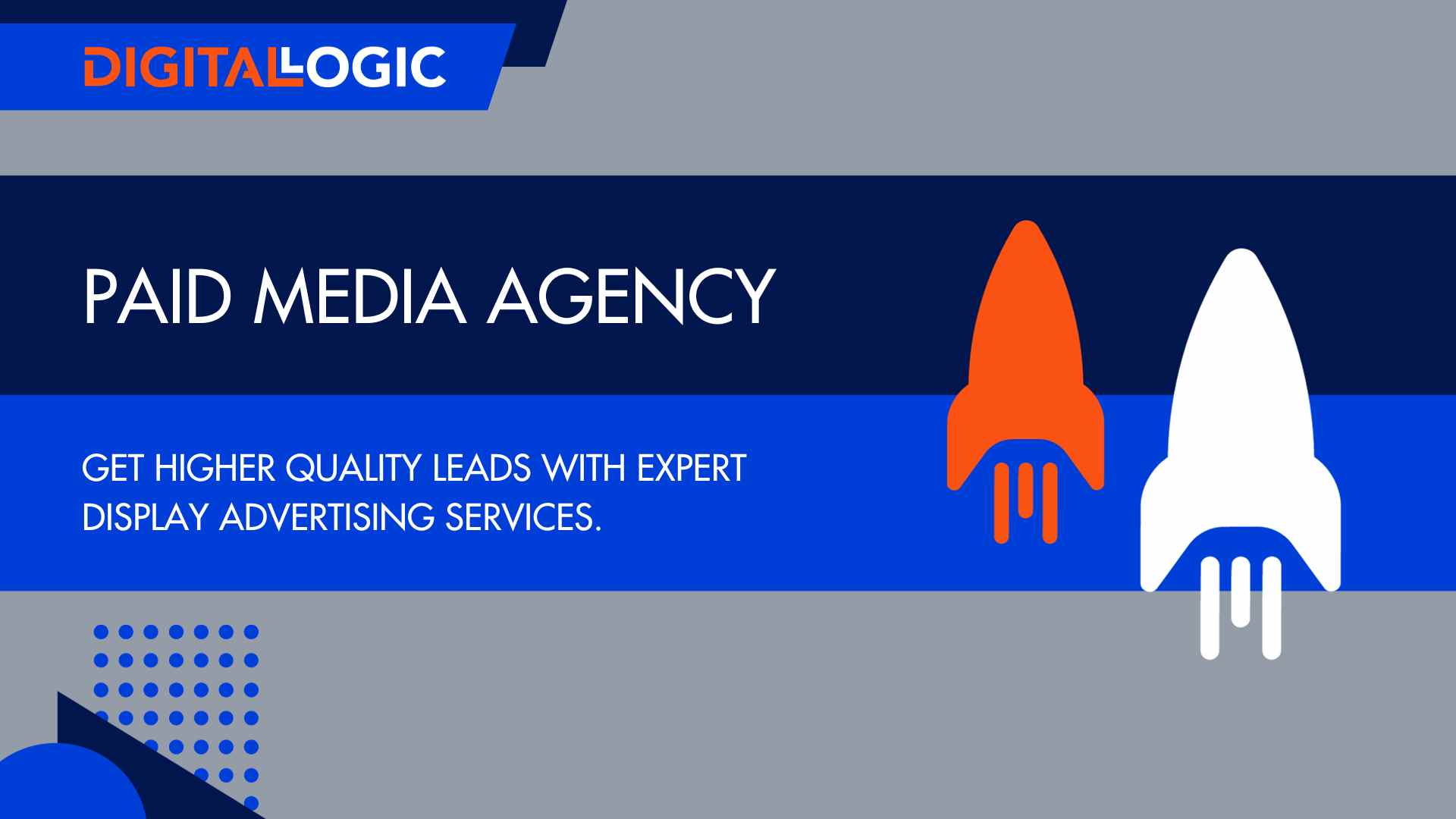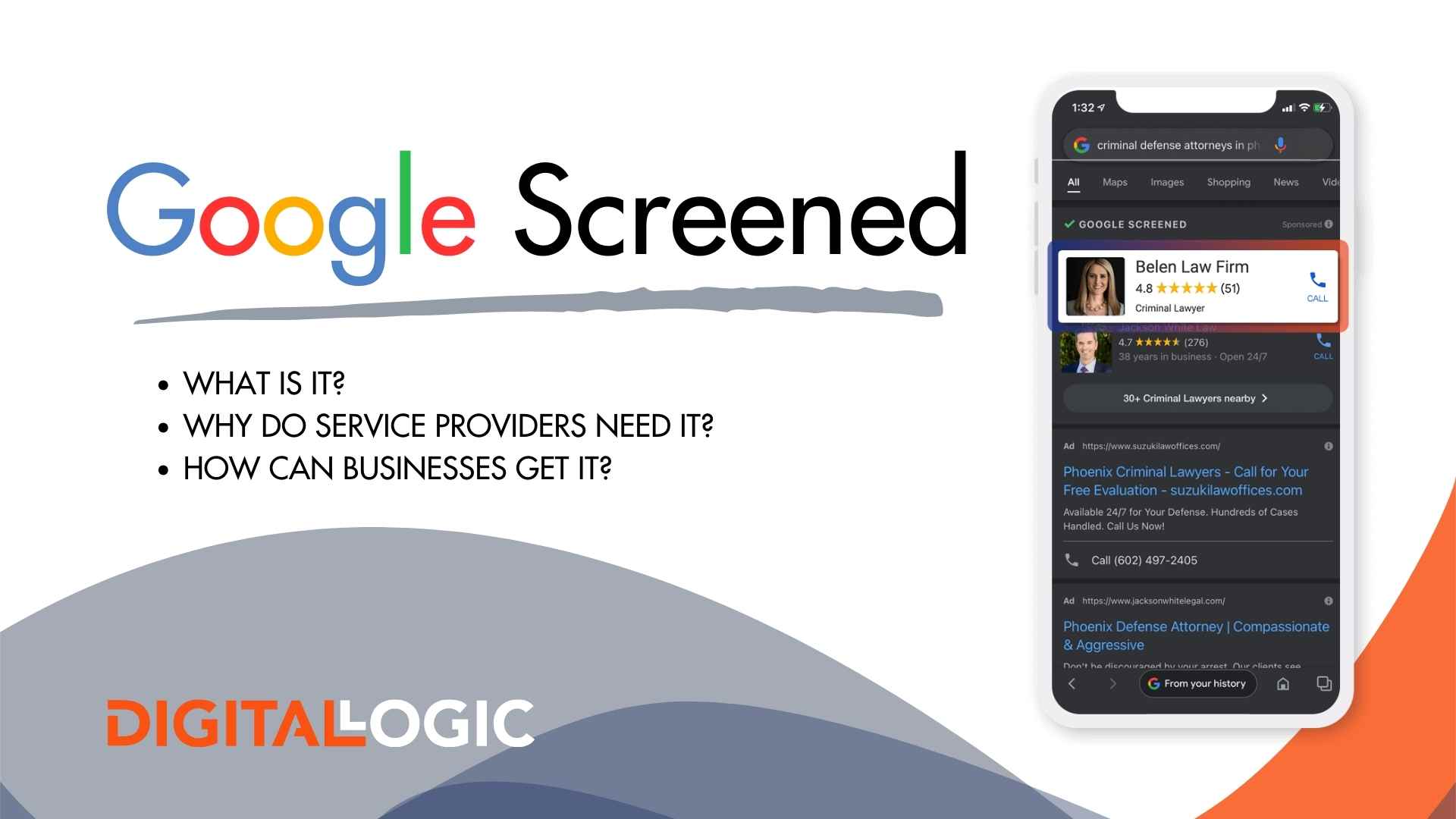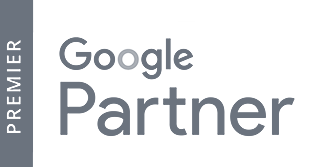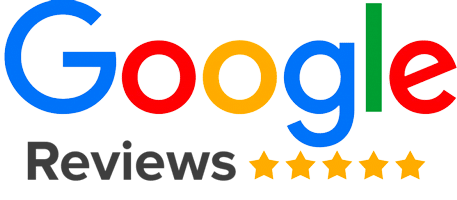Digital advertising is a strategic plan that includes a targeted, data-driven road-map to reach consumers and guide them through every step of the buying funnel. It’s the not-so-well-kept secret of the online world. Using a digital advertising strategy ensures that the right information is delivered to the right people at the right time.
Ready to grow your brand into a household name? A good place to start is with digital advertising.
Let’s take a step back in time. You turn on the television to watch your favorite show, and every once in a while, a commercial comes on. You aren’t watching for the commercial, but sometimes, you find yourself interested in something the commercial offers.
Platforms, such as Facebook, Instagram, and YouTube are widely known and used. They’re your trusted show, so to speak.
Digital advertising is simply taking advantage of trusted platforms by “renting” a spot, similarly to how commercials appear in the middle of your show.
Traditional advertising methods such as television, radio, and paper ads can be tailored to target a general audience, but this is where the options end.
Traditional marketing relies on generalizations. In this section of marketing, only broad demographics are targeted. Ads are thrown like darts to a bulls-eye, blindfolded. This form of advertising is generally ineffective at creating leads or generating sales. There also isn’t a way to quantify results.

 With a little trial and error, combined with research, you will determine the digital ad type that’s best suited for your business, or you could hire a digital advertising professional, like Digital Logic. This helps to increase sales and cut advertising costs.
With a little trial and error, combined with research, you will determine the digital ad type that’s best suited for your business, or you could hire a digital advertising professional, like Digital Logic. This helps to increase sales and cut advertising costs.
 The general rule of thumb is to spend six dollars per day for cold traffic, three dollars per day on converting warm to hot traffic, and one dollar per day on up-selling and re-targeting. This rule will keep you from overspending or under-spending but may need to be adjusted from time to time.
The general rule of thumb is to spend six dollars per day for cold traffic, three dollars per day on converting warm to hot traffic, and one dollar per day on up-selling and re-targeting. This rule will keep you from overspending or under-spending but may need to be adjusted from time to time.
 People are spending more and more time on social media every day. Whether they are on a break, at a traffic light, or in bed, your prospects are probably hanging out on some form of social media, at any given time.
Consumers aren’t just using social media to pass their time, they also deliberately go there to shop. Seeking out new online brands, as well as new shops in their area, is a common use for social media these days.
Social media advertising is one of the most well-known forms of digital marketing. It’s intuitive.
Facebook has been collecting data from its members, well before online marketing became popular. This benefits you and your business by allowing you to target specific demographics using the data that’s already been collected for you.
Not sure where to start your social media strategy? Check out the top social media sites for businesses.
People are spending more and more time on social media every day. Whether they are on a break, at a traffic light, or in bed, your prospects are probably hanging out on some form of social media, at any given time.
Consumers aren’t just using social media to pass their time, they also deliberately go there to shop. Seeking out new online brands, as well as new shops in their area, is a common use for social media these days.
Social media advertising is one of the most well-known forms of digital marketing. It’s intuitive.
Facebook has been collecting data from its members, well before online marketing became popular. This benefits you and your business by allowing you to target specific demographics using the data that’s already been collected for you.
Not sure where to start your social media strategy? Check out the top social media sites for businesses.

 This will make your results easier to quantify. Digital advertising goals, put simply, are what you would like to achieve with your campaign.
This will make your results easier to quantify. Digital advertising goals, put simply, are what you would like to achieve with your campaign.

Digital Advertising vs. Traditional Advertising
Table of Contents
ToggleDigital Advertising is Data-Driven
However, digital advertising uses algorithms and tracking to seek out the most valuable customers: those who will be most likely to have interest in your product or service, based on their digital footprint and search engine intent. These advertisements then utilize the available information within platforms to help track and collect data. This gives you the ability to measure your results. More importantly, this data may be used to improve your campaign, allowing you to get better results, with each new run. The longer your ad runs, the more specific your target audience becomes, making each “click” more meaningful. You are able to learn the traits and patterns associated with your buyers and use this information to target new customers. Even if a lead doesn’t immediately turn into a customer, you are able to measure their level of engagement and re-target them at the appropriate stage of his or her buying journey.Digital Media Adapts to Changing Technology
What is Digital Media? As time changes, so does technology. People aren’t as plugged into their cable television programs anymore. Thanks to online platforms like Netflix and Hulu, people have the ability to choose what they watch, when they want to watch. However, it isn’t only television that’s numbers are dropping. Paper mediums are experiencing a decrease in readership, as consumers demand paperless literature. Everything is becoming digitized. If you aren’t online, you simply aren’t reaching a large portion of your potential customers. A whopping 89% of people stated they are online every day, and people across genders, races, and incomes are all making great use of the Internet for work and entertainment. They spend as much time on online as one would spend at a part-time job. This gives businesses a huge opportunity, and window, in which they can showcase their product. Before continuing, a little housekeeping to be addressed: it’s important to note that popup ads are not the same as digital marketing. These are just as intrusive as traditional marketing and won’t make a good impression with your prospects. Digital marketing is targeted and brings ease and efficiency to you and your customers.
Why Use Digital Advertising for Small Business?
Digital Advertising Allows Multiple Campaigns
Digital advertising allows you to run multiple campaigns across multiple platforms. Because this form of marketing is all-encompassing, you are able to choose the channels that best suit your business.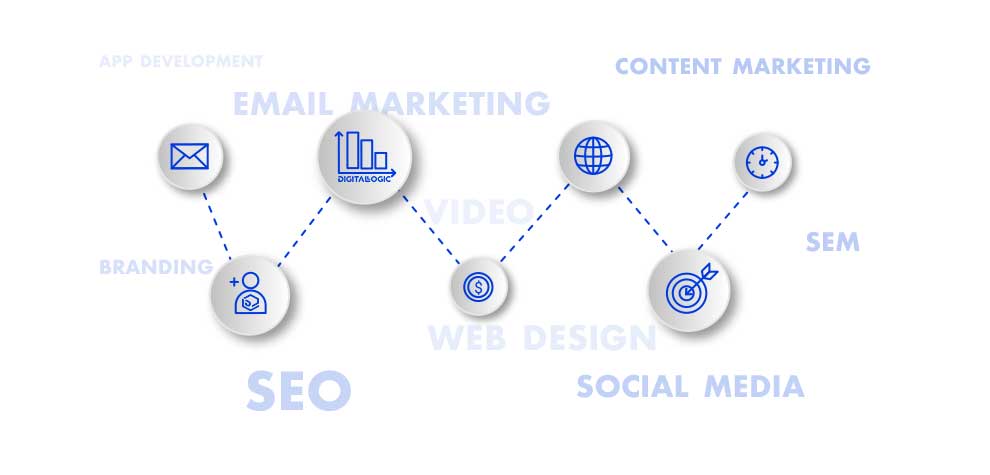 With a little trial and error, combined with research, you will determine the digital ad type that’s best suited for your business, or you could hire a digital advertising professional, like Digital Logic. This helps to increase sales and cut advertising costs.
With a little trial and error, combined with research, you will determine the digital ad type that’s best suited for your business, or you could hire a digital advertising professional, like Digital Logic. This helps to increase sales and cut advertising costs.
Digital Advertising Supports All Ad Budgets
Digital ads are convenient because they are scalable. Social Media is a great jump off point for beginners. For just five dollars a day, you can start an ad campaign on Facebook. Use this guide for more information on how to start! Even small campaigns can bring a strong ROI, if you know how to create exceptional ads. And, if your campaign doesn’t convert the first time, you can use the data you collected to refocus and re-target your campaign. On the flip side, if you are converting more customers than you can handle, you can always cut down your campaign, until you are able to catch up. With digital ads, you can reach multiple target audiences at the same time, with separate campaigns that have an offer crafted, just for them. Setting up campaigns is simple but can be maximized for a profit with the help of a professional. How much should you spend on digital advertising for small businesses? You may be unsure of how much you need to spend on digital marketing.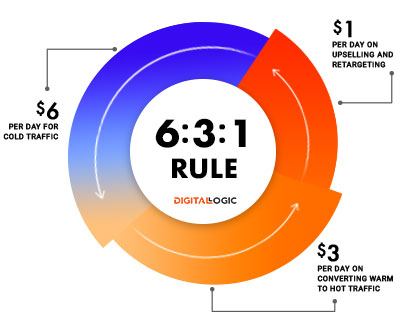 The general rule of thumb is to spend six dollars per day for cold traffic, three dollars per day on converting warm to hot traffic, and one dollar per day on up-selling and re-targeting. This rule will keep you from overspending or under-spending but may need to be adjusted from time to time.
The general rule of thumb is to spend six dollars per day for cold traffic, three dollars per day on converting warm to hot traffic, and one dollar per day on up-selling and re-targeting. This rule will keep you from overspending or under-spending but may need to be adjusted from time to time.
Digital Marketing Allows Small Businesses to Get Even
Small businesses can now compete with big corporations, thanks to digital advertising. You don’t need millions of dollars to run flashy TV ads or shell out thousands for a billboard. You can reach just as many people, and the right people, at that, with just a few clicks and a modest budget. Digital marketing allows you to go to bat with big companies and make a name for your business. What is the best online advertising for small businesses? It depends on what strategy you choose. Because of your in-depth market research, your brand may seem more personal and specific to your customer. Being personable goes a long way when building strong customer relationships. Don’t let your small size discourage you. You will likely be able to provide exceptional, personal customer service that your prospects won’t soon forget.Digital Ads Bring Instant Gratification
Your business can benefit from long-term marketing strategies. However, if you want to see real-time results that boost your sales today, welcome to the world of digital advertising. Some campaigns bring business and revenue on the same day of the launch. If you use a strategy like content marketing, it could take several months before you begin to see traffic increases. However, content marketing is essential to help convert the customer, once they’ve clicked on your digital ad and head to your site. Consumers need to know that your brand is valuable. And, how do you prove to potential customers that your brand is of value? By providing relevant content that pertains to their day-to-day activities. Content marketing is the happy place between what your brand objective is and what customers want to see. Great content will attract people to your brand and secure your name as an authority in your industry. It isn’t as fast as paid advertising, but it is a key part of a long-term marketing plan and saves you money. By gaining organic traffic, a business can expect for numbers to grow slowly, but exponentially. Put simply, content marketing provides a long-term value that cannot be found with paid advertisement, but paid advertisement will help get the traffic you need to boost your content marketing efforts. They go hand-in-hand.What are the Types of Digital Advertising for Small Businesses?
Social Media Advertising
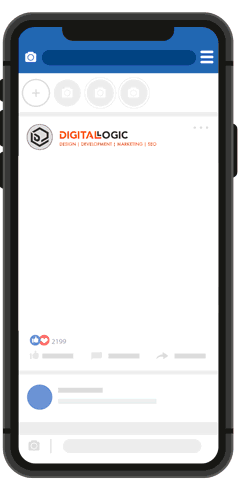 People are spending more and more time on social media every day. Whether they are on a break, at a traffic light, or in bed, your prospects are probably hanging out on some form of social media, at any given time.
Consumers aren’t just using social media to pass their time, they also deliberately go there to shop. Seeking out new online brands, as well as new shops in their area, is a common use for social media these days.
Social media advertising is one of the most well-known forms of digital marketing. It’s intuitive.
Facebook has been collecting data from its members, well before online marketing became popular. This benefits you and your business by allowing you to target specific demographics using the data that’s already been collected for you.
Not sure where to start your social media strategy? Check out the top social media sites for businesses.
People are spending more and more time on social media every day. Whether they are on a break, at a traffic light, or in bed, your prospects are probably hanging out on some form of social media, at any given time.
Consumers aren’t just using social media to pass their time, they also deliberately go there to shop. Seeking out new online brands, as well as new shops in their area, is a common use for social media these days.
Social media advertising is one of the most well-known forms of digital marketing. It’s intuitive.
Facebook has been collecting data from its members, well before online marketing became popular. This benefits you and your business by allowing you to target specific demographics using the data that’s already been collected for you.
Not sure where to start your social media strategy? Check out the top social media sites for businesses.
Email Advertising
Consumers and businesses alike, regularly use email to interact. Since email is a preferred method of interaction, this presents itself as a great opportunity to see above-average ROI (return on investment). Email marketing techniques vary, but a good first step would be creating a client email list. How do you create an email marketing list? You can build a solid email list by creating a free offer that requires the person’s email to obtain. This offer should be valuable and make a good impression on your prospect. You can advertise this offer and build your email list through social media. Be picky and strategic with your email marketing. Add value to your prospects’ lives. Don’t just send a load of “buy now” emails over and over again. Most businesses eventually opt for an automated email distribution service, like Mobile Monkey. Automation in email marketing will save you time and money. A host of automatic email templates exist. You can tailor them to your business needs in order to increase sales and conversions. If someone signs up or buys, send a thank you email or up-sell them, if appropriate. For return customers, you can follow up purchases with a coupon code. The options are really endless, here.Retargeting
Just because a customer doesn’t buy, doesn’t mean they don’t want your product or service. There are a number of reasons why a customer may add to cart but not make a purchase–They could have gotten distracted. Maybe, they put it in their cart so that they can purchase it on payday. All of these issues can be resolved by retargeting. With retargeting (or remarketing), you place that same juicy offer in front of your prospect, again. By doing so, you bring your product or services back to reinforce the potential customer’s need to invest in your brand. If they got distracted and forgot about it, you can win them back by simply retargeting, in some cases. The more often you remind a prospect of what they want, the more likely they are to buy. Remarketing is simply picking the low-hanging fruit that wasn’t ripe the first time you came by.PPC Ads
Today, most shoppers start product research online. With search engine advertising, your business can promote your brand or product at the top of the search results using paid ads. With search engine marketing, you essentially pay to have your business placed above, beneath, or next to the search results. PPC (Pay Per Click) management works best for those who want to increase brand awareness and conversions. It allows them to get in front of a very large audience, while only paying for people who want what they have to offer.This gives you the ability to:
- Increase website traffic
- Promote brand recognition
- Generate sales conversions
- Provide quick delivery
Cost Per Thousand / CPM Impressions
CPM is short for cost per mille, Mille is Latin for thousand. The cost per 1,000 impressions or CPM is similar to PPC (pay per click). Each time your ad appears, you will pay a certain amount to the platform. However, if you get too many clicks and the platform loses money, they will likely have you switch to pay per click. If your ads are meant to raise brand awareness and not designed to convert, then CPM is probably a better option than PPC.How much you will pay per click is determined by several factors:
- The Industry and Competition
- Other Competition for the Ad Spot
- Time and Day for Ads Scheduled
- Relevancy
Influencer Marketing
You may have seen people on Instagram with thousands of followers. They seem to spend their time traveling, shopping, eating pretty food, and promoting products. Product promotion is a way that many Instagram influencers make their money. They choose to work with products that match their brand. Because of their authority and influence, they are able to naturally market products to their followers. Many small businesses are hopping on board the influencer train. It’s a great way to leverage an existing audience without doing much of the dirty work. Influencers can get business sales and valuable exposure, quickly. They are small-scale celebrities that people look up to and take advice from. Some influencers will promote your brand for free, while others charge by the second.
How Does Digital Advertising Work?
When you compare digital advertising to traditional advertising, you’ll see there aren’t too many similarities. For one, you don’t typically pay your ad spend bill upfront. You may pay an upfront management fee–the cost with planning and managing your account, but you only pay the search engine when a user completes a desired action–either clicking or seeing your ad. Like we mentioned, with digital advertising, you have the ability to use advanced technology to target your ideal audience. These targeting advancements go far beyond the scope of anything traditional marketing has to offer.A few common targeting options for digital advertising include:
- keyword
- interests
- demographics
- remarketing
Digital Advertising Goals
You can determine which digital advertising strategies to use, based on your goals. When setting this up, make sure you are implementing SMART Goals: This will make your results easier to quantify. Digital advertising goals, put simply, are what you would like to achieve with your campaign.
This will make your results easier to quantify. Digital advertising goals, put simply, are what you would like to achieve with your campaign.
A few examples of digital advertising goals include:
- Increase in Sales
- Increase Brand Awareness
- Target New Customers
- Retarget Customers
- Grow Market Share
Build Your Digital Advertising Strategy
Digital marketing relies heavily on both forms of traffic. Both are equally valuable and a key part of a sustainable marketing strategy. You should aim to get as much free traffic as possible, but paid traffic will often produce a higher ROI. Paid traffic is far more controlled. Like we mentioned before, it can be targeted to a specific audience to place the perfect offer in front of them at the perfect time. This traffic can be turned off when you reach your client capacity or run out of products. Organic, unpaid traffic is a bit unpredictable. You may be receiving a lot of organic traffic regularly, but then it suddenly stops after Google changes the algorithm. Businesses can also use paid traffic to drive organic traffic. How? It’s simple. A page that is getting a lot of traffic will rank higher. Paid ads, when executed correctly, will drive enough paid traffic to your website to boost your ranking and get search traffic. It’s a winning cycle that many business owners have come to love. However, it’s not a one-off thing that will land you millions from one ad. There’s a plan that you have to follow to reap the benefits of digital marketing.Know Your Metrics
Learning all the necessary marketing metrics and jargon can be overwhelming, at first. Here is a brief guide to what all those letters mean:
- CTR: Click-Through Rate: Your click-through rate is simply the number of people who see your ad divided by the number of people who actually click on it.
- CPA: Cost Per Acquisition: This is your total advertising cost divided by how many new customers you obtained during the campaign.
- CPL: Cost Per Lead: The amount you spent divided by the number of leads generated.
Know Your Digital Advertising Platforms
As mentioned before, social media platforms like YouTube, Facebook, and Twitter can all be sourced for traffic. You can even use LinkedIn, Google, and Pinterest. Facebook and Google are good places to start advertising, as 80% of referral traffic comes from those two sites. As technology races forward, your rank is no longer dependent on being first in the alphabet. You now have to bid on keywords that will return your site as a result to people searching for that term. Social media also uses algorithms to determine who sees what. As users browse through the pages, they see ads. Instead of seeing ads for products that anybody could be interested in, they see ads for products and services that are specific to their needs, desires, and problems. This type of targeted marketing stretches your dollar much further than traditional methods. It allows you to take advantage of data collection to create highly specific offers tailored to small demographics. Now that you know where to place your ads, it’s time to think about how to create effective ads that return the desired action. Whether you are after impressions or conversions, you need to employ the proper methods that guarantee results.How to Create Digital Advertising That Works for Small Businesses
The following ideas are relevant across most platforms. While there are certain platform-specific tips and tricks out there, these basic principles of advertising will take you a long way in creating successful campaigns.Understand the Buying Funnel
There is a specific process that every customer goes through when interacting with a brand for the first time. Think of this process as a funnel: building brand awareness, consideration, and conversion.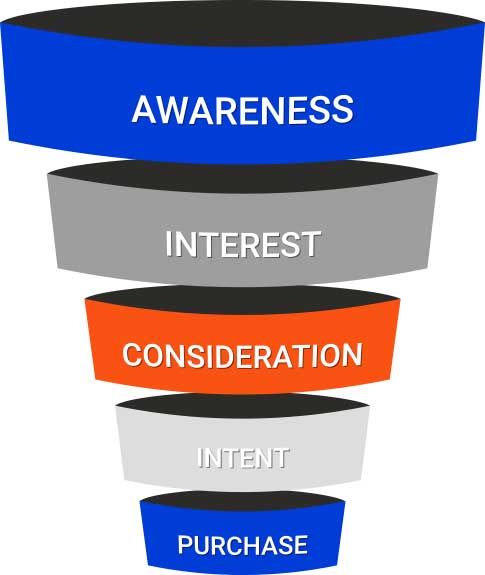
Building Brand Awareness
This happens the first couple of times a customer interacts with your brand. They may read a blog post on your website or see you pop up on their social media feed. These small, initial impressions are important in getting the prospect to see you as legitimate and trustworthy.Consideration and Intent
Most people aren’t going to buy from you the first time you show up. If they like what you have to offer, they’ll research to see if you offer the best solution available. They may even shop around for a better value. In that instance, you can retarget them with a better offer or a discount.Conversion
Many business owners have a love/hate relationship with this word. Conversions are the end goal and can be exciting, but that’s not to say these come easy..they don’t. This is the turning point when a prospect becomes a customer. Conversions can be measured in a variety of ways, including how many people add a product to their cart or how many people sign up for your service.Know the Temperature Game
You wouldn’t trust a total stranger with your money. Similarly, your prospects aren’t going to hand over their money the first time they interact with your brand. It will likely take two or three interactions before they feel comfortable enough to buy from you. You have to know the three temperatures of traffic to determine what steps to take next.Cold traffic
Cold traffic correlates with brand awareness. If you have ever done cold calling or cold emailing, you know that it’s important to appear non-intimidating. This doesn’t mean you can’t aim for conversions in the first ad, but you might get more bang for your buck with impressions.Warm Traffic
Warm traffic lines up with consideration. They no longer see you as suspicious, but they want to make sure that your offer is the best out there. This is the time to implement special discounts.Hot traffic
Hot traffic comes from people who buy from you. After conversion, you want to follow up with your customers. You can start email marketing to them and draw them into your next product release. It is a good practice to simply meet your customers where they are. Don’t try to force a sale before building a relationship. Don’t be afraid to retarget when things don’t go as planned the first time.How to Create an Effective Advertising Campaign
Several factors come into play when it comes to creating a successful ad campaign. A few of these factors are the offer, the copy, the design, the theme, and precision. Each of these elements is vital to the effectiveness of your ad campaign.Compelling Offer
Your offer is not your service or product. When you formulate a campaign, you are making a special offer based around one of your products or services. This promotion should be compelling. No one will visit your site if you aren’t offering something in return. Furthermore, simply sending people to your website isn’t going to trigger them to buy a specific product. Your offer should include the price, the delivery method, and all the necessary details needed for the customer to purchase. Transparency is key in order to build trust.Professional Ad Copy
The copy refers to the words that go with your ad. This is one of the most important pieces of a well-performing ad. Some copywriters get paid extremely well to write a few simple words. But, knowing what to write at the right time can be of great value to your marketing strategy.For those who are just starting out, here are a few pointers for better ad copy:
- Make sure your intent is clear.
- Don’t use confusing language or big words.
- Speak in a way that is familiar to your target audience.
- Make sure your prospects can relate to what you are saying.
- Form a bond by creating an emotional hook.
- Don’t use hype, just be creative and real.
- Avoid “salesy” language.
Custom Design
The design elements should be consistent during the entire course of the campaign. Design plays a key role in brand development.Use colors, images, and typefaces that you want to be associated with your brand. This includes:
- Graphics
- Imagery
- Colors
- Typography
Overall Theme
Whether you’re launching a product or running for mayor, a theme is of universal importance. Your theme is essentially the single most important factor, as it is what is going to bring in clients and keep them engaged.In order to ensure your marketing theme is successful, your theme needs to be:
- Creative
- Concise
- Original
- Inclusive
- Relevant
- Positive
